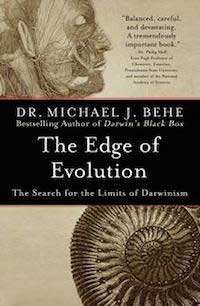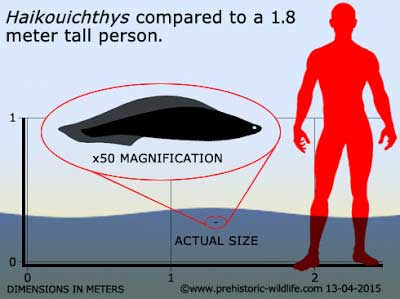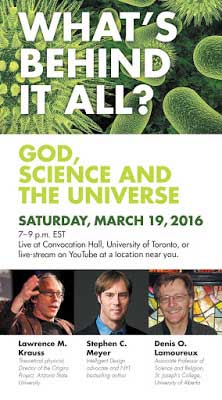
The pro-Intelligent Design book, Science and Human Origins, Endorses a Literal Adam and Eve.
Including responses from ID advocates
“Darwinist hero of the hour”: the ID crowd sort of respond
Intelligent Designʼs leading institution published a book advocating a literal “Adam and Eve”
Gauger argues that there are five major haplotypes but only three of the haplotypes are “ancient.” Since up to four haplotypes could be inherited from two people, this leaves the door open for a bottleneck involving a single pair of humans. But even if we accept all parts of her argument up to here, the IDist book is not internally consistent, because Gauger does not dispute mainstream opinion that the last two major haplotypes out of the five arose five 4 to 6 million years ago. But this means that all five haplotypes arose in pre-humans, since Luskin in his chapter denies that true humans existed 4 to 6 million years ago (he says that true humans began with H. erectus, 1.8 million yrs ago). Therefore 4 million years ago when the last of the HLA-DR haplotypes originated, our closest relatives were still non-humans, i.e., Australopithecines. So ALL FIVE major haplotypes of HLA-DR pre-date human-ness by the IDistsʼ own admissions, which looks like added evidence of a continuity between Australopithecines and later hominids including modern day humans. Also, if Adam and Eve with their five major halotypes arose over 1.8 million years ago they were non-human.
IDʼist authors in the book criticize fields in which they lack expertise. A lawyer challenges the worldʼs palaeoanthropologists and geneticists. Should he be trying to take them all on at once? Accusations that the entire field of palaeoanthropology is driven by personal disputes and that Francis Collins is a bad Christian are simply not compelling reading in a book that is putatively about scientific argument. In reality the overwhelming majority of scientists in each of the fields addressed in this book share a broad consensus that is at odds with what the authors claim. And, despite the breathless accusations of a Darwinian conspiracy, mainstream scientists are a diverse bunch. Like Francis Collins and Francisco Ayala, who are both singled out in this book, many are themselves Christian yet accept the balance of evidence for our evolutionary past.
The problem for IDʼist like Luskin is that there is a progression in the fossil record between us and early Homo. There is no evidence of a major discontinuity at the point where humans are most likely to have acquired our truly modern humanness… A paper by Schultz, Nelson and Dunbar elegantly summarizes the evidence for cognitive evolution, showing a series of changes that culminate in the emergence of modern human language within the last 100,000 years. Brain size/cranial evolution over more than 3 million years also shows a progression from the cranium sizes of ancient apes and hominids to more modern species of homo.
The thrust of the ID book is to claim human exceptionalism, disprove our common descent with apes, and search for a real-life Adam and Eve. None of this is part of a program to genuinely investigate the world. This is particularly clear because the authors are happy to create doubt about what they call Darwinism, rather than create positive cases for an alternative to it.
Comments
I have heard quite a few people now asking for an honest and frank discussion between, for example, Casey Luskin and Behe on common descent. If they were undertaking a real scientific program, there would be no need for people to request it - open comment and debate are a normal part of science, and it seems to me that common descent under ID should be a non-trivial matter for such discussion.
—Paul McBride July 14, 2012
Michael Behe told us his hypothesis a few years ago. We both took part in a week-long lecture series on the intelligent design debate at Hillsdale College. After Michael Beheʼs lecture, some of us pressed him to explain exactly how “irreducibly complex” mechanisms arose—mechanisms that cannot, according to Behe, be explained as products of evolution by natural selection. He repeatedly refused to answer. But after a long night of drinking he finally answered: “A puff of smoke!” A physicist in the group asked, Do you mean a suspension of the laws of physics? Yes, Behe answered. Not very persuasive as a scientific answer.
—RBH July 9, 2012
Reminds me of what Berlinski wrote: “Before the Cambrian era, a brief 600 million years ago, very little is inscribed in the fossil record; but then, signaled by what I imagine as a spectral puff of smoke and a deafening ta-da!, an astonishing number of novel biological structures come into creation, and they come into creation at once.— [Berlinski, “The Deniable Darwin” (June 1996), Commentary magazine.]
Berlinski added to Beheʼs explanation by adding the word “Ta da.”
The Discovery Institute Produced A Book That Advocates a Literal “Adam and Eve”, and Continues to Leave the Door Wide Open to Young-Earth Creationism Because Thatʼs Where the Majority of their Money Comes From
Extremism
Stephen Meyer tutored Howard Ahmanson, Jr. son in science and was asked by Ahmanson, “What could you do if you had some financial backing?” In the 1970s multimillionaire Howard Ahmanson became a Calvinist and joined Rushdoonyʼs Christian Reconstructionist movement. Ahmanson served as a board member of Rushdoonyʼs Chalcedon Foundation for approximately 15 years before resigning in 1996. Ahmanson said he had left the Chalcedon board and “does not embrace all of Rushdoonyʼs teachings” which include young-earth creationism, biblical inerrancy, abandoning the Constitution and placing the US directly under “Biblical law” — including state punishment for religious offenses such as blasphemy or violating the Sabbath, and the use of Biblical forms of punishment such as stoning.
The same year Ahmanson lost interest in working with Chalcedon he seems to have gained interest in supporting “intelligent design.” In 1996 a representative of Ahmanson promised $750,000 over three years to fund the Instituteʼs Center for the Renewal of Science and Culture which went on to form the motive force behind the intelligent design movement. By far the biggest backers of the intelligent design efforts continue to be the Ahmansons, who have provided 35 percent of the science centerʼs $9.3 million since its inception and now underwrite A quarter of its $1.3 million annual operations. Mr. Ahmanson sits on Discoveryʼs board. In 2002 some politicians returned money given them by Ahmanson after learning how far right his views were, so Ahmanson opened himself up to some interviews, but could not bring himself to repudiate his former Chalcedonian views, stating for instance, “I think what upsets people is that Rushdoony seemed to think - and Iʼm not sure about this - that a godly society would stone people. I no longer consider that essential. It would still be a little hard to say that if one stumbled on a country that was doing that, that it is inherently immoral, to stone people for these things.”
The Center for the Renewal of Science and Culture also recʼd a founding grant of $450,000 from the conservative Maclellan Foundation (Calvinist, reconstructionist, dominionist, and most probably YECʼs) “We give for religious purposes,” said Thomas H. McCallie III, executive director of the Maclellan Foundation. “This is not about science, and Darwin wasnʼt about science. Darwin was about a metaphysical view of the world.”
The Discovery Institute supports more than one issue or project and has gained support from some secular groups like the Verizon Foundation and the Gates Foundation, which gave $1 million in 2000 and pledged $9.35 million over 10 years in 2003. But Greg Shaw, a grant maker at the Gates Foundation, said the money was “exclusive to the Cascadia project” on regional transportation which has nothing to do with the Discovery Instituteʼs views on “intelligent design.”
But the Discovery Instituteʼs science branch has cost it the support of the Bullitt Foundation, which gave $10,000 in 2001 for transportation related projects, as well as cost it the support of the John Templeton Foundation in Pennsylvania which supports “new insights between theology and science,” but found the DI to be less focused on interacting with modern science and scientists and more interested in public persuasion. Denis Hayes, director of the Bullitt Foundation, described Discovery in an e-mail message as “the institutional love child of Ayn Rand and Jerry Falwell,” saying, “I can think of no circumstances in which the Bullitt Foundation would fund anything at Discovery today.” Charles L. Harper Jr., the senior vice president of the Templeton Foundation, said he had rejected the instituteʼs entreaties since providing $75,000 in 1999 for a conference in which intelligent design proponents confronted critics. “Theyʼre political - that for us is problematic,” Mr. Harper said. While the DI has “always claimed to be focused on the science,” he added, “what I see is much more focused on public policy, on public persuasion, on educational advocacy and so forth.”
Not surprisingly, the Discovery Institute defended the right of Bryan College trustees to fire any professors who question or doubt that “Adam and Eve” were directly created.
And the DI book, Science and Human Origins, seems to have been composed in order to argue that we all descended from a literal first couple, “Adam and Eve,” starting with chapter 1 in which Ann Gauger introduces human evolution in the context of Christians losing faith in a literal Adam and Eve, lamenting Christians who accept the scientific evidence for evolution.
Meanwhile, Phil Johnson dedicated his book “Defeating Darwinism” to “Howard and Roberta” —Ahmanson and his wife. I donʼt know if Ahmnson had a direct hand in funding the publication of Johnsonʼs book, but it is not impossible, since his fellow Reconstructionist guru, Rushdooney, helped fund the publication of Henry Morrisʼs first book, The Genesis Flood, that advocates young-earth creationism. Johnson has also admitted that his distaste for evolutionary biology is based on religious convictions.
Johnson, adds, “I have consistently said that I take no position on the age of the earth, and that I regard the issue as not ripe for debate yet… When developments make it appropriate for me to clarify or adjust my position, I will not hesitate to do so.”
One wonders just what developments could possibly make Johnson make up his mind about the age of the Earth. Is he holding out for some new and improved radiometric dating technique? Waiting for new ice core results? I doubt it. Heʼs probably referring to political, not scientific, developments. The scientific case for an old Earth is overwhelming. But Johnsonʼs “Big Tent” strategy requires him to do the exact opposite of what he pretentiously claims to be doing, which is following the evidence wherever it leads. Instead, he simply sweeps the evidence for something as firmly supported as the age of the earth under the rug in favor of far more nebulous topics like the precise means by which this or that feature evolved or not.
Many D.I. members are like Johnson, saying “it doesnʼt matter how old or how young the earth is,” so it doesnʼt matter whether animals popped into existence whole a couple thousand years ago, or whether they share a common ancestry billions of years in the making. I guess astronomers, geologists, physicists, and biologists have no idea how old the earth is, or whether organisms are related via common ancestry. But if one was to arrange the following scientific propositions based on how relatively secure each proposition is, the worldʼs scientists would agree that an old age of the earth and cosmos is most secure, common ancestry second, and the question of the precise mechanisms that lay behind each evolutionary change, third. But the DI is funded by many who would like to challenge all three propositions but realize that the third is the only one in which they can currently hope to muddy the waters.
The ID movement is more extreme than say, “fine-tuners,” who see the view the “design” as front-loaded at the Big Bang (via six cosmological constants), and view everything that as naturally unfolding since then.
The Discovery Institute is naturally hesitant to reveal its creationist and extremist roots.
Look up the CVs of its members. We already discussed Ahmanson, who now says, as of 2014, “I am not a young-earth creationist,” though I bet he once was if he was ever on the board of the Chalcedon Foundation. I wonder when and why he changed his mind, or even if he did really change it and is claiming he is old-earth to add a bit more luster to the Institute he founded? And I wonder what he might say if asked about Adam and Eve?
Stephen C. Meyerʼs info on the DI site does not include Meyerʼs time at Palm Beach Atlantic University. Instead they only mention Meyer working at Whitworth, which they say Meyer left in 2002 to work full time on DI related projects.
But in Meyerʼs CV it says says that he surrendered his tenured (!) position at Whitworth in 2002 so he could work from 2002-2005 at a creationist Christian college whose “Guiding Principles,” include, “All those who become associated with Palm Beach Atlantic as trustees, officers, members of the faculty or of the staff, must believe in the divine inspiration of the Bible, both the Old and New Testaments; that man was directly created by God;…”
Dembski worked for a young-earth creationist Southern Baptist Theological Seminary from 2005-2013, where YECʼism is de rigeur, and Dembskiʼs boss forced him to restate his views on the age of the earth the the Flood of Noah to make them more amenable to the universityʼs views.
Dembski now works full time for DI.
Paul Nelson is a young-earth creationist, and Jonathan Wells, like Johnson, wonʼt say how old the earth is. For instance at the Kansas Evolution Hearings, Wells was asked,
Q. Doctor Wells, do you have a personal opinion as to how old the earth is?
A. I think the earth is probably four-and-a-half billion or so years old. But Iʼll tell you this, I used to— I would have said, a few years ago, Iʼm convinced itʼs four-and-a-half billion years old. But the truth is I have not looked at the evidence. And I have become increasingly suspicious of the evidence that is presented to me and thatʼs why at this point I would say probably itʼs four-and-a-half billion years old, but I havenʼt looked at the evidence.
The Unification Church of which Wells is a member has a website that says, “Scientists calculate the age of the earth to be some thousand million years,” or one billion years old, (reference) but on a different page they say, “The age of the earth is calculated to be several billion years.”
The pretension that these IDʼists support, that the age of the earth isnʼt really an issue, ignores the fact that it is, because one broad definition of evolution is change over time, and species change and spread out over time, leaving many of those offshoot species to die out in the process, such countless deaths are the price paid until some branch of a species spreads into places where it flourishes or where it can survive with some degree of greater stability and adaptability than before.
The DI reminds me of the Christian Coalitionʼs advice to all their “stealth” candidates try and pass “under the radar” but never telling people they are Evangelical Christians who believe in creationism and that the Lord is coming soon, or never let on that they are Calvinist supporters of biblical law, nor let on how extreme their personal opinions might be on a range of issues.






